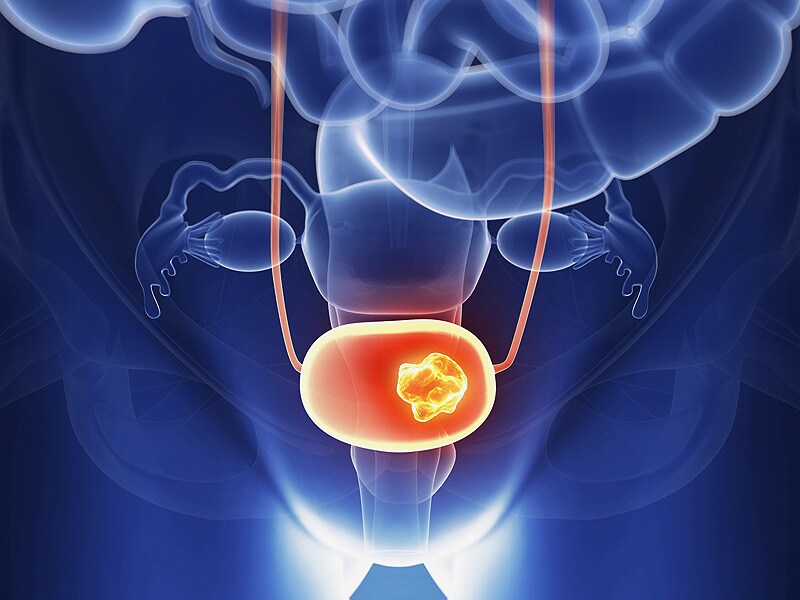Bladder Cancer Treatment Drugs Market size was estimated at USD 5.25 billion in 2023 and is projected to reach USD 7.52 billion in 2030 at a CAGR of 4.60% during the forecast period 2023-2030.
The Bladder Cancer Treatment Drugs Market encompasses the various pharmaceutical therapies used in the treatment of bladder cancer, including chemotherapy, immunotherapy, targeted therapies, and others. Bladder cancer is the sixth most common cancer globally, with a significant portion of cases diagnosed at later stages, requiring aggressive treatment. The increasing prevalence of bladder cancer, advances in drug therapies, and rising investments in cancer research are driving growth in this market.
Key Drivers
- Rising Prevalence of Bladder Cancer:
- Bladder cancer remains a significant health issue worldwide, with risk factors such as smoking, exposure to chemicals, and aging populations contributing to the rise in cases. Early-stage detection often leads to higher treatment success rates, boosting demand for effective therapies.
- Advances in Immunotherapy and Targeted Therapy:
- Innovations in bladder cancer treatments, particularly immunotherapies like immune checkpoint inhibitors (ICIs), have revolutionized the treatment landscape. PD-1/PD-L1 inhibitors, such as Pembrolizumab (Keytruda) and Atezolizumab (Tecentriq), are commonly used in advanced bladder cancer and have shown promising results, contributing significantly to market growth.
- Growing Use of Combination Therapies:
- Combining chemotherapy, radiation, and immunotherapy has improved treatment outcomes, especially for metastatic bladder cancer. The development of novel drug combinations is a major focus of ongoing research, which is expected to boost market growth.
- Increased Cancer Research Funding and Clinical Trials:
- Significant investments by governments, pharmaceutical companies, and healthcare organizations in bladder cancer research are facilitating the discovery of new treatment options and drug formulations. The increasing number of clinical trials for bladder cancer drugs is also propelling market expansion.
- Aging Population:
- The incidence of bladder cancer increases with age, and the global rise in the elderly population is expected to drive demand for bladder cancer treatment drugs, especially in developed regions.
Key Trends
- Personalized Medicine and Biomarker Research:
- The use of biomarkers to identify specific genetic mutations in bladder cancer patients is driving the adoption of personalized medicine. Targeted therapies like Erdafitinib are showing efficacy in patients with FGFR genetic mutations, offering more tailored treatment options.
- Increasing Use of Immune Checkpoint Inhibitors:
- Immune checkpoint inhibitors, such as Pembrolizumab and Atezolizumab, are becoming the standard of care for metastatic bladder cancer. Their expanding use in earlier stages of the disease is likely to further drive the market.
- Advent of Novel Drug Delivery Methods:
- Innovative delivery methods, including intravesical therapies and nanoparticle-based drugs, are being developed to enhance drug efficacy and reduce side effects.
- Rise in Combination Therapies:
- Combining immunotherapy with chemotherapy or targeted therapies is showing promising results in clinical trials, increasing survival rates and improving quality of life for bladder cancer patients.
- Expansion of Clinical Trials:
- Ongoing clinical trials for new drugs, combination therapies, and advanced treatment regimens are expected to lead to new approvals, expanding the market.
Challenges
- High Cost of Treatment:
- Advanced bladder cancer drugs, particularly immunotherapies and targeted therapies, are expensive, limiting accessibility for some patients, especially in low- and middle-income countries.
- Side Effects of Current Therapies:
- Many of the existing chemotherapy and immunotherapy drugs have significant side effects, which can limit their use in certain patient populations, particularly the elderly or those with comorbidities.
- Limited Efficacy in Late-Stage Cancer:
- Despite advancements, treatment options for late-stage or metastatic bladder cancer remain limited, with survival rates still low compared to early-stage disease.
- Regulatory Challenges:
- Strict regulatory requirements and lengthy approval processes for new cancer drugs can delay market entry and access to innovative therapies.
Future Outlook
The bladder cancer treatment drugs market is expected to witness continued growth, driven by increasing cancer prevalence, advancements in immunotherapy and targeted therapies, and rising investments in research and development. The development of more effective combination therapies and personalized medicine approaches will likely improve patient outcomes and further expand the market.
Get Free Exclusive PDF Sample Copy of This Research Report https://stringentdatalytics.com/sample-request/bladder-cancer-treatment-drugs-market/14736/
Market Segmentations:
Global Bladder Cancer Treatment Drugs Market: By Company
Pfizer
GlaxoSmithKline
Celgene Corporation
Sanofi
Hoffmann-La Roche
Novartis International
Eli Lilly
AstraZeneca
Bristol-Myers Squibb
Global Bladder Cancer Treatment Drugs Market: By Type
Non-Muscle-Invasive Bladder Cancer
Muscle-Invasive Bladder Cancer
Global Bladder Cancer Treatment Drugs Market: By Application
Low-Grade Tumors
High-Grade Tumors
Global Bladder Cancer Treatment Drugs Market: Regional Analysis
The regional analysis of the global Bladder Cancer Treatment Drugs market provides insights into the market’s performance across different regions of the world. The analysis is based on recent and future trends and includes market forecast for the prediction period. The countries covered in the regional analysis of the Bladder Cancer Treatment Drugs market report are as follows:
North America: The North America region includes the U.S., Canada, and Mexico. The U.S. is the largest market for Cold-chain Pharma in this region, followed by Canada and Mexico. The market growth in this region is primarily driven by the presence of key market players and the increasing demand for the product.
Europe: The Europe region includes Germany, France, U.K., Russia, Italy, Spain, Turkey, Netherlands, Switzerland, Belgium, and Rest of Europe. Germany is the largest market for Cold-chain Pharma in this region, followed by the U.K. and France. The market growth in this region is driven by the increasing demand for the product in the automotive and aerospace sectors.
Asia-Pacific: The Asia-Pacific region includes Singapore, Malaysia, Australia, Thailand, Indonesia, Philippines, China, Japan, India, South Korea, and Rest of Asia-Pacific. China is the largest market for Cold-chain Pharma in this region, followed by Japan and India. The market growth in this region is driven by the increasing adoption of the product in various end-use industries, such as automotive, aerospace, and construction.
Middle East and Africa: The Middle East and Africa region includes Saudi Arabia, U.A.E, South Africa, Egypt, Israel, and Rest of Middle East and Africa. The market growth in this region is driven by the increasing demand for the product in the aerospace and defense sectors.
South America: The South America region includes Argentina, Brazil, and Rest of South America. Brazil is the largest market for Cold-chain Pharma in this region, followed by Argentina. The market growth in this region is primarily driven by the increasing demand for the product in the automotive sector.
Click Here, To Buy Premium Report https://stringentdatalytics.com/purchase/bladder-cancer-treatment-drugs-market/14736/?license=single
Reasons to Purchase this Market Report:
- The competitive environment includes the proportions of important players, recent innovations, and strategy.
- Companies with extensive product offerings, pertinent financial data, recent advancements, SWOT analyses, and player tactics.
- Quantitative, qualitative, value (in USD million), and volume (in units million) data are among the segments and sub-segments.
- The research contains a wealth of data, including market dynamics and opportunities throughout the forecast period.
- Data at the regional, sub-regional, and national levels also provides information on the market’s supply and demand dynamics.
About Stringent Datalytics
Stringent Datalytics offers both custom and syndicated market research reports. Custom market research reports are tailored to a specific client’s needs and requirements. These reports provide unique insights into a particular industry or market segment and can help businesses make informed decisions about their strategies and operations.
Syndicated market research reports, on the other hand, are pre-existing reports that are available for purchase by multiple clients. These reports are often produced on a regular basis, such as annually or quarterly, and cover a broad range of industries and market segments. Syndicated reports provide clients with insights into industry trends, market sizes, and competitive landscapes. By offering both custom and syndicated reports, Stringent Datalytics can provide clients with a range of market research solutions that can be customized to their specific needs.
Contact Us
Stringent Datalytics
Contact No- +1 346 666 6655
Email Id- sales@stringentdatalytics.com




Leave a Reply